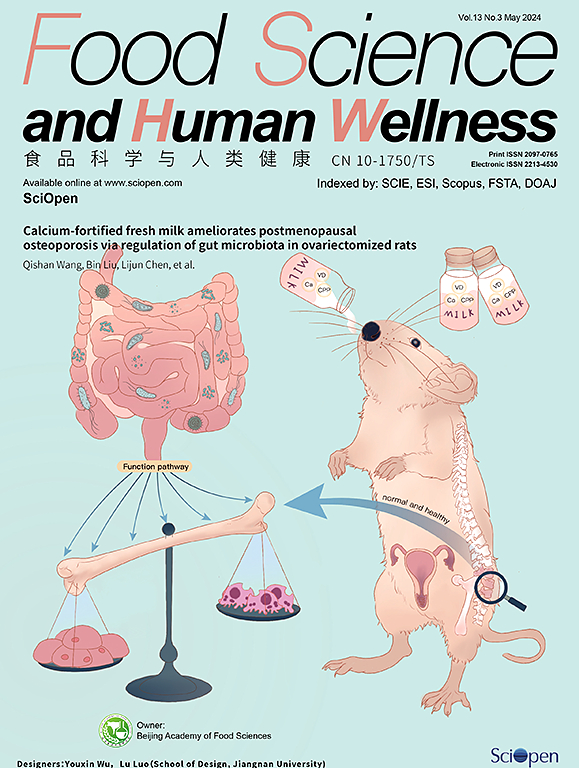Molecular mechanisms of bitterness and astringency in the oral cavity induced by soyasaponin
IF 7.4
1区 农林科学
Q1 FOOD SCIENCE & TECHNOLOGY
引用次数: 0
Abstract
The interaction mechanism between soyasaponin (Ssa) and bitter receptors/mucin, as well as the saliva interface behavior of Ssa, were investigated to explore the presentation mechanism of Ssa bitterness and astringency (BA). Strong bitterness arising from high Ssa concentrations (0.5–1.5 mg/mL) had a masking effect on astringency. At Ssa concentrations of 1.0–1.5 mg/mL, Ssa micelles altered the structure of mucin, exposing its internal tryptophan to a more polar environment. At Ssa concentrations of 0.05–1.50 mg/mL, its reaction with mucin increased the aggregation of particles in artificial saliva, which reduced the frictional lubricating properties of oral saliva. Ssa-mucin interactions affected the salivary interfacial adsorption layer, and their complexes synergistically reduced the interfacial tension. Ssa monomers and soyasapogenols bind to bitter receptors/mucin via hydrogen bonding and hydrophobic interactions. Class A Ssa binds more strongly than class B Ssa, and thus likely presents a higher BA. In conclusion, Ssa interacts with bitter receptors/mucin causing conformational changes and aggregation of salivary mucin, resulting in diminished frictional lubricating properties of oral saliva. This, in turn, affects taste perception and gustatory transmission.
大豆皂苷诱导口腔苦味和涩味的分子机制
研究大豆皂苷(Ssa)与苦味受体/粘蛋白的相互作用机制,以及Ssa的唾液界面行为,探讨Ssa苦味和涩味(BA)的呈现机制。高Ssa浓度(0.5 ~ 1.5 mg/mL)产生的强烈苦味对涩味有掩蔽作用。在Ssa浓度为1.0-1.5 mg/mL时,Ssa胶束改变了粘蛋白的结构,使其内部色氨酸暴露于更极性的环境中。在Ssa浓度为0.05 ~ 1.50 mg/mL时,其与粘蛋白的反应增加了人工唾液中颗粒的聚集,降低了口腔唾液的摩擦润滑性能。ssa -粘蛋白相互作用影响唾液界面吸附层,其配合物协同降低界面张力。Ssa单体和大豆apogenols通过氢键和疏水相互作用结合到苦味受体/粘蛋白上。A类Ssa比B类Ssa结合更强,因此可能具有更高的BA。综上所述,Ssa与苦味受体/黏液蛋白相互作用,引起唾液黏液蛋白的构象改变和聚集,导致口腔唾液的摩擦润滑性能降低。这反过来又影响了味觉感知和味觉传递。
本文章由计算机程序翻译,如有差异,请以英文原文为准。
求助全文
约1分钟内获得全文
求助全文
来源期刊

Food Science and Human Wellness
Agricultural and Biological Sciences-Food Science
CiteScore
8.30
自引率
5.70%
发文量
80
审稿时长
28 days
期刊介绍:
Food Science and Human Wellness is an international peer-reviewed journal that provides a forum for the dissemination of the latest scientific results in food science, nutriology, immunology and cross-field research. Articles must present information that is novel, has high impact and interest, and is of high scientific quality. By their effort, it has been developed to promote the public awareness on diet, advocate healthy diet, reduce the harm caused by unreasonable dietary habit, and directs healthy food development for food industrial producers.
文献相关原料
公司名称
产品信息
阿拉丁
pyrene
 求助内容:
求助内容: 应助结果提醒方式:
应助结果提醒方式:


